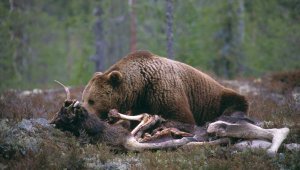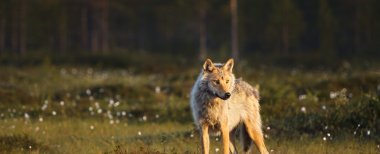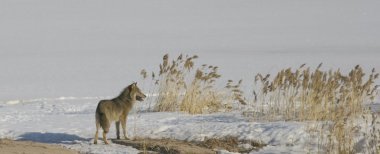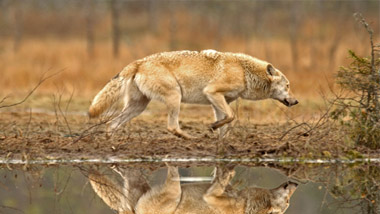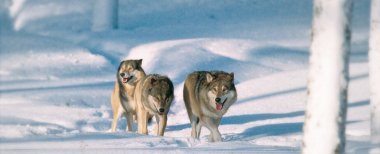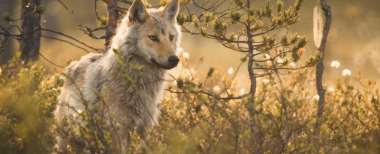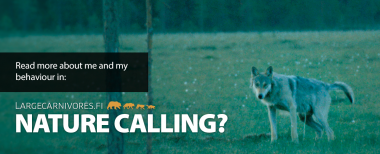Wolf hunting
Wolf hunting is only really possible when there is snow on the ground. The tracks in the snow tell the hunters where the wolves have settled for the day. When their location is known, the wolves are encircled in a circle that is large enough to ensure that the wolves are not scared off too early. When it is certain that the wolves have been completely surrounded, the encirclement is marked with flag line.
Blog, professor Ilpo Kojola: Is there a predator pit in Karelia?
Thu Jan 19 11:17:00 2017
Large carnivores may have a major impact on moose population densities. A high density bear population may decrease moose calf production by >20%. In wolf pack territories with no substantial alternative prey species, such as white-tailed deer and reindeer, 25–50% of the annual increase of moose population may be taken by wolves, depending on territory size, pack size and local moose density.
A predator pit entails a situation where predation regulates a prey population at constantly low densities. That is, the consumption of prey by predators increases whenever prey populations begin to increase. The precondition for a predator pit to emerge is that more than one predator species share the same low density prey population, and that alternative prey species exist for the predators. With moose this concept traces some decades back to Southern Alaska where abundant populations of wolves, brown bear and black bears shared locally sparse moose population. This seems to presently hold true also with predation on moose in North Karelia.
It is, however, very unlikely that the low moose density of this region would sustain a high number of wolves for an extended period of time due to the absence of alternative ungulate prey. Furthermore, while wolves are more or less dependent on moose for food, moose do not have a big impact on its consumption rates by the omnivorous bear. The absence of alternative prey for the wolf may weaken the potential for its regulatory impact on moose and thus the emergence of a predator pit. Without alternative prey, wolf numbers will eventually decrease with decreasing moose population size.
The third consumer of moose, human being, has tools to regulate the abundance of both moose and its predators. An ideal eco-socio-economical management solution for moose populations in Northern Karelia would involve minimizing moose damage to forestry and road accidents, while maintaining sufficient numbers of moose for both man and carnivores. Unfortunately, such an ideal is not easy to achieve in easternmost Finland where abundant large carnivore populations are shared with northwestern Russia.
Management plan for the Finnish wolf population
The population management plan for Finnish wolves approved in 2005 was the first of its kind. It was also the first wolf management plan to be renewed. The Finnish Wildlife Agency and Natural Resources Institute Finland worked together to create an updated management plan for wolf, which was then ap...
The Hunting Act and the relevant decrees
The bear, the wolf, the lynx and the wolverine are considered game animals. Legislation concerning game animals is laid out in the Hunting Act. More detailed provisions are found in the Hunting Decree, the Government Decree on Derogations Laid Down in the Hunting Act, and the species-specific Decree...
Sightings as the basis of population estimates
Natural Resources Institute Finland's (Luke) estimates on the numbers of animals are primarily based on sighting data collected by a volunteer organisation consisting of the contact persons of regional game management associations. Other utilised methods include on-the-ground censuses made by hunter...
